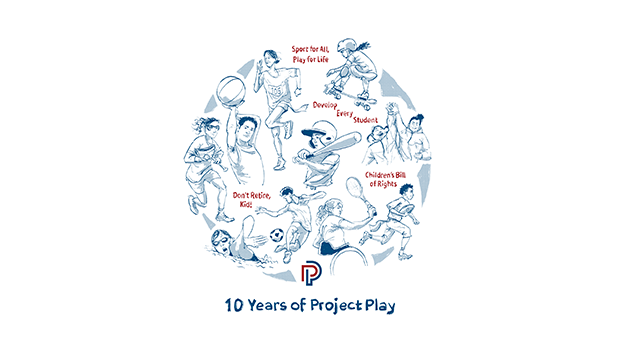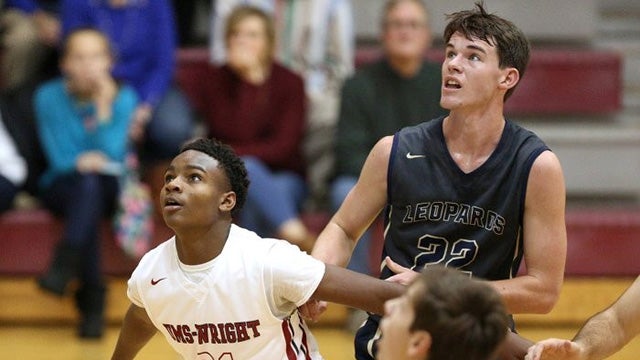For centuries, sports have been built off a model designed by men for men. Women simply inherited these models and tried to build upon them. The modern sports industry model generates revenue through three main sources – ticket sales, sponsorships and TV viewership from lengthy media-rights deals.
“COVID has completely shifted that,” said Sports Innovation Lab CEO Angela Ruggiero, a Hockey Hall of Fame member. “Therein lies the opportunity for women’s sports to rethink how we do business, and quite frankly, do it better. Sports as a whole are shifting, fans are shifting, technology is shifting. It’s a moment in time we’ve truly never had in the sports industry. It’s a really exciting time for women’s sports to bubble up and for women to get involved. It takes a woman to know what women want, and we need more women at the table.”
What if pro sports were owned, designed and run by women? How might the experiences change or stay the same? That was the theme of the Aspen Institute’s Future of Sports conversation series event on April 16, at a time when organizations like the Women’s National Basketball Association (WNBA), National Women’s Soccer League (NWSL) and Athlete’s Unlimited (AU) present new pro sports models.
“With women at these positions, it would be totally different,” Athletes Unlimited softball player Aleshia Ocasio said. “We’d have women betting on women and a more equitable playing field.”
More women leading leagues, teams, sports governing bodies and media companies would change the values reflected in sports and ensure women athletes are not afterthoughts, said Julie Foudy, a new investor in the Angel City FC soccer team and a former U.S. National Team star. “That’s the biggest difference I’m noticing,” she said. “It’s just a shift of mindset. Instead of just surviving, it’s a thriving mentality.”
Angel City, which begins playing in the NWSL next year, has a hodgepodge of A-list celebrities who are investors: Natalie Portman, Jessica Chastain, Eva Longoria, Serena Williams, Abby Wambach, Mia Hamm … and the list goes on. The women-backed group is creating a new business approach, such as 10% of every sponsorship dollar going back into Los Angeles for community impact activities. For Angel City’s deal with Heineken, 10% of the sponsorship funds are going to the Los Angeles LGBTQ community. For every seat deposit that is sold, Angel City and Nike are donating a sports bra to underserved communities since the lack of sports bras is a major barrier for women to continue playing sports.
“It’s not just, yeah, (Angel City is) here to win soccer games and build a successful model, but we’re also here to make a difference in our community,” Foudy said. “That is another stark difference with women-led organizations. They’re tying into what matters with fans, emotionally and viscerally. Fans are loving that. They’re very brand loyal. Brands are starting to realize it’s a different, different model when it’s run by women.”
Ruggiero taps into this at the Sports Innovation Lab by studying fan behavior data around women’s sports through The Fan Project. Ruggiero said she plans to use the research to demonstrate that women’s sports don’t receive enough media coverage, investment or sponsorship dollars as a massive market that’s undervalued, underserved and misunderstood.
Fans are encouraged by the Sports Innovation Lab to provide access to their social media history. The data become anonymized and aggregated to analyze fan behavior trends, such as social media engagement, merchandise purchases and downloaded apps. A report will be released in June as a roadmap for new women’s sports revenue opportunities.
“We’ve been ranking women’s sports (as an industry) based on Nielsen ratings,” Ruggiero said. “We’re in a chicken and the egg conundrum. ‘Well, people don’t watch women’s sports.’ We’re not on TV, no kidding. But there are avid fans on social media and digitally savvy and finding content on Twitch. These fluid women’s sports fans are the future fan, to be quite honest.”
Fluid fans are defined by the Sports Innovation Lab as those open to change, empowered to choose and continuously evolving. Fluid fans may follow players more than teams. A recent study by Nielsen found that athlete advocacy posts are generating 63% more engagement for brands compared to other owned social media content. Brands are increasingly looking to partner with socially conscious sports properties. Nielsen predicts that rights holders who have an authentic sustainability agenda can expect an 11% increase in sponsorship revenues over the next three to five years.
Athletes Unlimited is banking, in part, on individual storytelling and fluid fans to create a sustainable model for its new women’s softball, volleyball and lacrosse leagues. The leagues are unlike anything we’ve seen in men’s pro sports. Athletes Unlimited players essentially have ownership of their teams, whether by redrafting players each week in one standalone city, creating a scoring system that awards points based on individual and team performance, sitting on racial equity committees or developing marketing strategies.
It’s an experiment that could lay the foundation for what’s possible in pro sports. Athletes Unlimited games have been broadcast or streamed by ESPN, CBS Sports and Fox Sports. Nike, GEICO and Gatorade are among the league’s sponsors. Players receive salaries between $10,000 and $40,000 over a five-week season.
“I feel like (women athletes) have been conditioned to be thankful for everything we have,” Ocasio said. “While I am extremely thankful, I feel our generation wants more. … One thing that’s so awesome about Athletes Unlimited is the storytelling, and it’s been pivotal in the growth of our league.”
In 2019, women’s sports received 5.4% of sports media coverage on local TV news in Los Angeles and ESPN’s SportsCenter, according to a new study. That’s nearly the same figure from 1989, when the study first began by Cheryl Cooky, LaToya Council, Maria Mears and Michael Messner. To put that in perspective, it would take an entire childhood for girls and boys to see the same amount of sports media coverage for women that they see for men in just one year.
While men’s sports still typically draw far more viewers than women’s sports, growth during the pandemic has occurred in women’s sports while viewership for men’s leagues declined. NWSL viewership was up 500%, the WNBA regular season increased 68% (and the WNBA Finals were up 15%), LPGA viewership increased 21%, and the NCAA women’s basketball Final Four was up 14% with its highest viewership in nine years.
Implicit bias is a major challenge for women’s sports, Ruggiero said. For instance, type into Google “Best NCAA Basketball Players” and the entire first page of results is devoted to men’s basketball. Another example: Only 2% of venture funding goes to women-founded companies, such as Foudy’s investor group at Angel City.
“We like to invest in people that look like ourselves, so therein lies implicit bias into the funding that goes into women’s sports, women’s products and women’s health care,” Ruggiero said. “I sat on the board of the (International Olympic Committee) and initiated the gender equality project. I was dumbfounded. Why can’t women’s hockey be the last event at the Olympics, or women’s marathon? Why is it always the men’s marathon or men’s hockey? Why can’t we switch up scheduling?
“Why are there differences in equipment? Why are there differences in bonuses at the federations? Why, why, why? We should be asking these questions to really unlock the implicit bias in all the ways that men’s sports have been funded for decades. There’s a why behind this. It’s encouraging because people are asking these questions.”
The WNBA, which is subsidized by the NBA, announced in 2020 a new eight-year labor deal that will pay players an average of $130,000 and guarantee full salaries while on maternity leave. The top players can now earn more than $500,000, triple in pay what they used to make. The agreement also calls for 50-50 revenue sharing, based on the league achieving revenue growth targets from broadcast, marketing and licensing deals.
The NWSL, established in 20212, is easily the most successful professional women’s soccer league ever in the U.S. Previously, the Women’s United Soccer Association burned through about $100 million in losses from 2001 through 2003, and Women’s Professional Soccer ran heavy deficits from 2009 until 2011.
Unlike with the first two leagues, the NWSL has received about $20 million in investment from U.S. Soccer, which managed the NWSL until recently. The change gives team owners more control over the league, though U.S. Soccer will continue to pay the salaries of the U.S. national team players in the league and it’s expected the federation’s funding won’t significantly drop.
“It’s hard, of course, to run a women’s professional sports league,” Foudy said. “I think this time will be very different. … People are starting to realize the potential of it. In the first two iterations, we learned a ton in terms of management and spending and how to make sure we are doing things efficiently and smartly.”
Ruggiero believes it’s time for women’s leagues to stop comparing themselves to men’s leagues that enjoyed a massive head start in investment, and instead create better models that meet the moment. Women’s leagues no longer need to have a companion men’s league to succeed, unless there is equal investment in women under one brand, such as Wimbledon and the Olympics, Ruggiero said.
“If the NBA were to say, ‘We’ll treat the W equally,’ I’d say, ‘Hell, yeah, let’s go,’” she said. “But are you going to … underfund it and expect it to be successful? If so, it’s not going to work. … To get there quicker, it would be great to walk into a (men’s sports) system. But I’d never want to be in a system where you’re the ugly stepchild and not treated the same way.”
So, women’s sports leagues are innovating – and in the process, they may be creating sustainable models designed by women for women and men.
Jon Solomon is editorial director of the Aspen Institute Sports & Society Program. Watch past events from the Future of Sports conversation series.

